- Books Name
- class 8 th Mathematics Book
- Publication
- ReginaTagebücher
- Course
- CBSE Class 8
- Subject
- Mathmatics
Special types of parallelogram
- Concept of trapezium
A quadrilateral with one pair of parallel side is called trapezium.
A trapezium is isosceles trapezium, if its non-parallel sides are equal.
In a trapezium, the following properties are true:
- The sum of all the four angles of the trapezium is equal to 360°.
- A trapezium has 4 unequal sides.
- A trapezium has two parallel sides and two non-parallel sides.
- The diagonals of trapezium bisect each other.
- The length of the mid-segment is equal to 12 the sum of the parallel bases, in a trapezium.
- Sum of adjacent angles on non-parallel sides of trapezium is 180°.
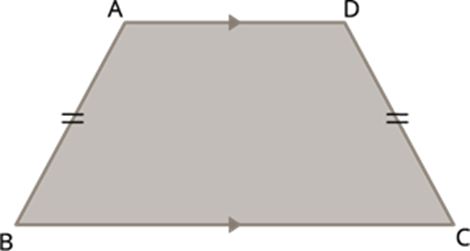
a quadrilateral ABCD is an isosceles trapezium, if AD||BC and AB=CD.
A quadrilateral is a parallelogram if its both pairs of opposite sides are parallel.
- Concept of kite
A quadrilateral with two pairs of equal adjacent sides and unequal opposite sides is called a kite.
define a kite ABCD is a quadrilateral having two pairs of equal adjacent sides and unequal opposite sides.
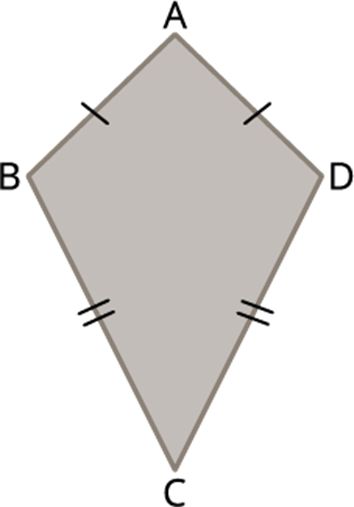
Thus, if ABCD is a kite, then AB=AD and BC=CD.
In a kite, the following properties are true:
- The sum of all the four angles of the kite is equal to 360°.
- A kite has two pairs of equal adjacent sides.
- A kite has unequal opposite sides.
- The diagonals of kite perpendicular bisect of each other.
- One of the diagonals bisects the other diagonal.
- In the figure, ∠B=∠D but \(∠A ≠ ∠C\).
- Concept of rhombus
A parallelogram with all sides are equal is called a rhombus.
Rhombus is a special case of kite. Note that the sides of a rhombus are all of the same length; this is not the case with the kite.
A rhombus has all the properties of a parallelogram and also that of a kite.
In a rhombus, the following properties are true:
- The sum of all the four angles of the rhombus is equal to 360°.
- The opposite sides are equal in length.
- The opposite angles are equal in measure.
- The adjacent angles are supplementary.
- The diagonals are perpendicular bisector of each other.
define a rhombus ABCD as a quadrilateral is a parallelogram with all the sides are in equal measures.
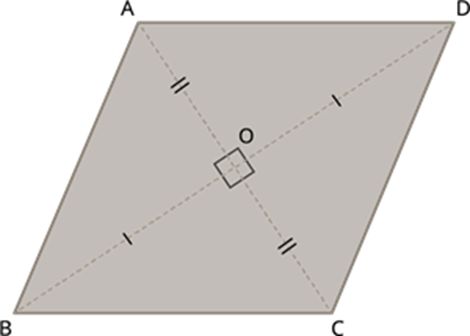
Thus, if ABCD is a rhombus then AB=BC=CD=AD, AB||CD and BC||AD.
- Concept of rectangle
A parallelogram whose each angle is a right angle is called a rectangle.
A rectangle has all the properties of a parallelogram with interior.
In a rectangle, the following properties are true:
- The opposite sides are parallel and equal in length.
- The interior angles of the rectangle is 90°.
- The diagonals are equal in measure and bisect each other.
- The adjacent angles are supplementary.
define a rectangle ABCD as a quadrilateral is a parallelogram whose each interior angle is 90°
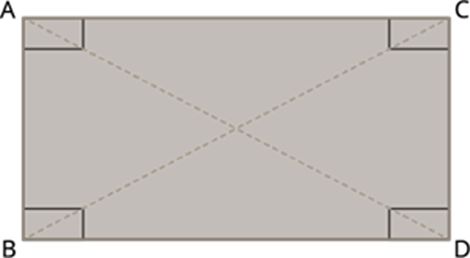
Thus, if ABCD is a rectangle then AB=BC=CD=AD and AB||CD and BC||AD.
Important!
- Concept of square
A rectangle is called a square whose adjacent sides are equal.
Rhombus is a special case of kite. Note that the sides of a rhombus are all of the same length; this is not the case with the kite.
A rectangle has all the properties of a parallelogram.
In a square, the following properties are true:
- The opposite sides are parallel.
- All the four sides are in equal measure.
- The interior angles of the square is 90°.
- The diagonals are equal in measure and perpendicular bisector of each other.
- The adjacent angles are supplementary.
define a square ABCD as a quadrilateral is a rectangle whose sides are in the same measure.
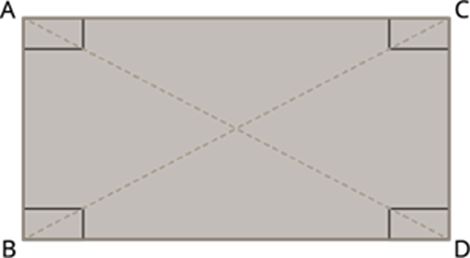
Thus, if ABCD is a rectangle then AB=BC=CD=AD and AB||CD and BC||AD.

 ReginaTagebücher
ReginaTagebücher
